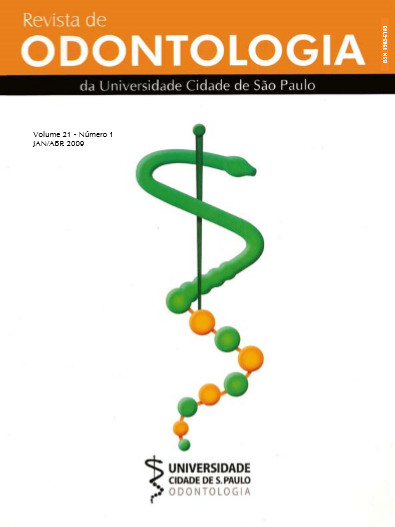Análise do contorno da face proximal obtido em restaurações classe II de resina composta utilizando-se dois tipos diferentes de matrizes metálicas
DOI:
https://doi.org/10.26843/ro_unicid.v21i1.433Palavras-chave:
Restauração dentária permanente, Resinas compostas.Resumo
Introdução: O contorno anatômico proximal em restaurações depende muito do tipo de matriz utilizada. O objetivo desse estudoDownloads
Referências
Chain MC, Baratieri LN. Restaurações estéticas com resina composta em dentes posteriores. 1a. ed. São Paulo: Artes Médicas; 1998.
Dörfer CE, von Bethlenfalvy ER, Staehle HJ, Pioch T. Factors influencing proximal dental contact strengths. Eur J Oral Sci 2000 Oct; 108(5): 368-77.
Keogh TP, Bertolotti RL. Creating tight anatomically correct interproximal contacts. Dent Clin North Am 2001 Jan; 45(1): 83-102.
Klein F, Keller AK, Staehle HJ, Dörfer CE. Proximal contact formation with different restorative materials and techniques. Am J Dent 2002 Aug; 15(4): 232-5.
Lowe RA. The use of sectional matrix systems in class II direct composite restorations. Dent Today 2004 Out; 23(10):108, 110-2.
Peumans M, van Meerbeek. Asscherickx K, Simon S, Lambrechts P, Vanherle G. Do condensable composites help to achieve better proximal contacts?. Dent Mater 2001 Nov; 17(6): 533-41.

